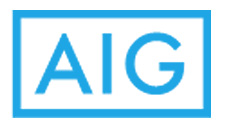According to sources, the official ceding commission was maintained at the 25 percent set in the deal’s firm order terms (FOTs) that were sent to reinsurers by broker Aon in late November.
Swiss Re is thought to have taken the largest participation on the giant QS with a number of other sizeable participations from large carriers such as Munich Re.
Sources say the program was effectively structured with three tiers: Swiss Re, Munich Re and a few other large reinsurers; a mid-tier and then a significant number of smaller participants typically taking 1-2 percent point lines.
The $25mn ground-up quota share was placed at the targeted 50 percent level with a 25 percent cede.
The Insurer also understands that that there were no side agreements despite speculation that the treaty included placements with non-concurrent terms.
Non-concurrent terms typically can include concessions on cede and other incentives, such as guaranteed larger participation on other reinsurance deals placed by the cedant and are more common on large and/or complicated reinsurance programs.
The inception date for the quota share was retained at 1 December despite it being formally placed much later in the month.
As previously reported, placing broker Aon had initially proposed to markets that a casualty QS treaty of this pedigree and volume would indicate a cede of around 27 percent with brokerage of 2 percent on the core casualty quota share.
The Insurer understands the business covered by the core casualty treaties is broad and includes primary auto liability and general liability as well as all excess lines. They cover AIG Risk Management (admitted business) and Lexington (E&S) as well as Cat XS BDA and all other excess lines.
AIG also separately placing an environmental quota share that firm-ordered with a 35 percent cede and 1 percent brokerage.
While the third new AIG US casualty treaty was a $75mn xs $25mn excess of loss cover placed by Willis Re and incepting at 10.1.
According to sources, all three treaties were ultimately over-subscribed albeit at varying levels with the QS – reflecting its size and complication – requiring the most negotiation with markets.
The deals were placed as AIG and its general insurance (GI) CUO Tom Bolt institutes a raft of sweeping changes to its casualty business in an attempt to turnaround flagging performance.
The placements also reflect a significant shift in AIG’s reinsurance buying strategy under new management led by group CEO Brian Duperreault, GI CEO Peter Zaffino and head of reinsurance and transformation Charlie Fry.
Bolt-led underwriting reforms include a shortening of large limits to $100mn maximum capacity per insured; previously AIG offered maximum lines of $250mn outside of the US and $150mn in the US.
AIG has also revised its underwriters’ authorities and is imposing greater co-ordination between divisions, such as regular calls among all excess divisions to monitor account aggregation, oversight senior management meetings and quarterly check-in calls with CUOs.
Another significant change is clearer demarcations between AIG’s admitted casualty division and its E&S writer Lexington to avoid cannibalisation and give greater external clarity.
This has also resulted in certain complex classes, such as rail, energy and construction, recently transferring to Lexington from other units, The Insurer understands.
Yesterday, Lexington wrote to its broker markets unveiling greater detail of this restructuring.
It means AIG’s North America business – led by Lex Baugh – is returning to a more traditional structure of admitted/wholesale and risk manager divisions in a bid to align clients with distribution.
As previously reported, AIG has reported to reinsurers the results of its push for higher rates across its portfolio.
In areas of the portfolio such as core primary casualty double digit rate increases were achieved in Q3, including 20 percent in auto liability and 10 percent in general liability.
Across swathes of the book AIG is budgeting increases at least in the single digit range for 2019.
AIG, Aon, Swiss Re and Munich Re did not respond to a request for comment on this article.













